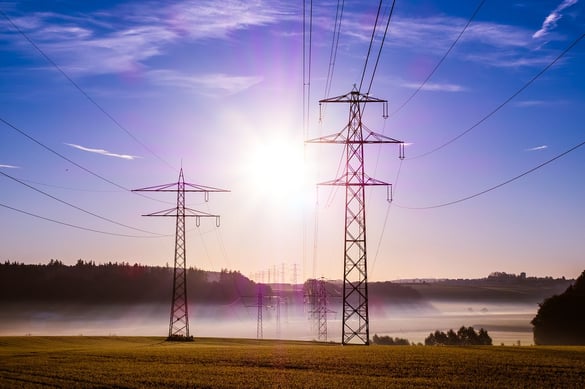Commissioning of mission-critical data center systems is essential to ensure highest system availability through different phases of operation – at the outset of operations, down the road at full system buildout, and, later, when systems begin to age.
Ben Fowler
Recent posts by Ben Fowler
4 min read
Rack-Mounted Load Banks for Data Center Load Testing
By Ben Fowler on Apr 11, 2018 3:04:41 PM
Topics: Building Cx & Design Review
3 min read
Using Opposite Season Testing to Protect the Integrity of Your HVAC System
By Ben Fowler on Jan 17, 2018 9:07:00 AM
During this recent cold-snap in the northeast, you can be sure that HVAC contractors were some of the busiest people around. Inevitably, when outdoor temperatures reach what are called “design-day” conditions, (the days with the highest expected heating or cooling loads a building can experience for its local climatic conditions), HVAC systems are put to the test. It is not uncommon for problems that are not obvious at lower temperatures to suddenly arise - sometimes leading to system outages, frozen pipes, and worse - exactly when you need your HVAC system the most.
Topics: Building Cx & Design Review
3 min read
Winter Olympics 2050 — Dubai, UAE?
By Ben Fowler on Dec 8, 2016 10:00:00 AM
I originally posted this in 2014. But, with Killington recently hosting a World Cup race in November, and given how much they relied on artificial snow, it seemed appropriate to bubble it back up. Snowmaking can be an extremely energy-intensive activity. With fewer solidly snowy winters, can skiing be sustainable [PDF]?
-Ben
The 2014 Winter Olympics being held in Sochi, Russia are located at one of the warmest locations in the history of the games. Setting aside for now the slow creep of a warming climate, Sochi, located at the eastern shores of the Black Sea, is a humid subtropical climate with an average winter temperature of around 50F during the day and still above freezing at night. In the higher elevations in the nearby Caucasus Mountains, where the events are taking place, daytime temperatures still average above freezing during the day. So, while it is a far better location for the actual “winter” portion of the games than the palm-tree-lined streets of the city of Sochi proper, it still is not the ideal location to host the Winter Games.
Topics: Sustainability Public Policy
3 min read
HFC Refrigerants Are on the Way Out
By Ben Fowler on Nov 7, 2016 12:00:00 PM
An Amendment to the Montreal Protocol
Last month, representatives from over 170 nations gathered in Kigali, Rwanda to negotiate and ultimately agree to an amendment to the Montreal Protocol—the landmark international treaty, signed in the late 1980’s, which led to the phase-out of the manufacture and use of ozone-layer-depleting chlorofluorocarbon refrigerants (CFCs). The 2016 amendment focused on phasing out hydrofluorocarbon refrigerants (HFCs) which, while safer for the ozone-layer than CFCs, are themselves very powerful greenhouse gasses with far more global warming potential than CO2.
Topics: Sustainability Public Policy
4 min read
Applying Commercial AC Features to Residential for Cleaner Energy During Peak
By Ben Fowler on Aug 31, 2016 10:00:00 AM
Recently, I was down in Philadelphia visiting family. Being late August, it was 95°F out with a dew point in the low 70’s. Overwhelmingly hot was an understatement, but I do know these things are relative. The residential window air conditioning unit (or as we like to call them in the office, “window shaker” for I think obvious reasons) was running full-tilt and not keeping up. The compressor hadn’t paused for the over an hour. Meanwhile, PJM, the Independent System Operator (ISO) serving the large mid-Atlantic/Central US region including Philly was projecting a 142 gigawatt afternoon peak electric load, with more than 1/3 of this load met with “dirt burners,” more commonly known as coal power plants. See the table below for the generation fuel mix and real time and projected load stats. This kind of info is provided on all the ISOs I’ve checked, which is interesting for us energy geeks. Looking at the data, it made me think I should have just shut the thing off.
Topics: Sustainability Energy Efficiency
4 min read
Leveraging Building Automation Systems During Construction
By Ben Fowler on Jul 13, 2016 10:00:00 AM
We are in the process of wrapping up an energy efficiency and building automation system upgrade project at an office building. The project involved converting an older boiler/tower heat pump loop system with constant speed pumping to variable flow, and the installation of a modern building automation system (BAS) with new energy efficient control sequences. The project has been a big success however, the project team experienced some challenges in really “dialing in” the controls. The main obstacle is that remote access to the BAS had not yet been established. Having remote access to building controls during the later stages of construction provides many benefits—including being able to monitor system performance remotely, review alarm logs and historical trends to identify problems, and even make adjustments on-the-fly to tune system parameters correctly. Without remote access we would have had to drive to the building, request access to a network closet from the property manager, plug into the server in a closet, and then spend time in a tight space trying to accomplish our goals before unplugging and heading back to the office. Needless to say it is not convenient to do frequently, and is expensive.
Topics: Building Cx & Design Review Building Performance & Technology
3 min read
The Future of Demand Response After FERC v. ESPA Decided by SCOTUS
By Ben Fowler on Apr 27, 2016 10:00:00 AM
On January 25, 2016, the US Supreme Court (SCOTUS) ruled on Federal Energy Regulatory Commission (FERC) v. Electric Power Supply Association (EPSA). The ruling, which was 6-2 in FERC’s favor, is great news for the bright future of a practice which can help grid operators better match electrical grid power supply and demand in real-time, known as Demand Response.

What is Demand Response?
Topics: Public Policy Energy Efficiency
2 min read
Importance of Healthcare Room Pressure Relationships
By Ben Fowler on Feb 23, 2016 10:00:00 AM
During recent functional testing of HVAC systems at a healthcare facility, part of our testing scope was to verify room static pressure relationships between adjacent sterile and contaminated spaces. In healthcare settings (and other settings where contamination control is critical) spaces can be designed to have more or less space pressurization with respect to one another—the result is that any air movement between spaces is in the direction from clean to dirty, and not the reverse.
Topics: Building Cx & Design Review Healthcare
3 min read
Pneumatic Transport Systems: Actually a Series of Tubes
By Ben Fowler on Dec 23, 2015 10:00:00 AM
In the mid-2000s, the late US Senator Ted Stevens (R-Alaska) famously used an analogy for the internet as a series of tubes. The full analogy was a bad one, and was concerning since it revealed to the tech savvy public how little the congressional entities in charge of creating policy actually understood the technology to which they were attempting to tailor policy. Incidentally, the needle has not moved much in this area in the intervening decade (crypto back-door arguments being a prime example), but that is a blog post for another time.
Topics: Building Performance & Technology Healthcare
3 min read
Prices Keep Falling for Large-Scale Solar PV. So what?
By Ben Fowler on Oct 21, 2015 6:00:50 AM
In the five years or so between the late 2000s and 2014, prices for large-scale solar photovoltaic (aka “solar PV” or “PV”) power generation installations have fallen by 50% due to reasons including incremental technology improvements, higher production volumes, more efficient manufacturing, and more efficient and competitive installation. The news of falling large scale solar PV costs is not new to those who follow these kinds of things, but the continued drastic decline in prices has brought us to a point worth noting. A recently released Lawrence Berkeley National Laboratory (LBNL) report on this subject titled Utility-Scale Solar 2014[1], found that the 20th percentile of utility scale PV project costs (the least-expensive 20%) were installed for around $2 per WattAC. Some notable recent utility-scale PV power purchase agreements (a.k.a “PPAs”, which are contracts between producers and buyers of power typically for a fixed price per megawatt) in the Southwestern US have been for prices as low as $40/MWh—the study notes that at this price, solar PV is competitive with the fuel-only component of operating a natural gas plant (i.e., ignoring gas generation fixed capital costs such as the power plant itself!).








